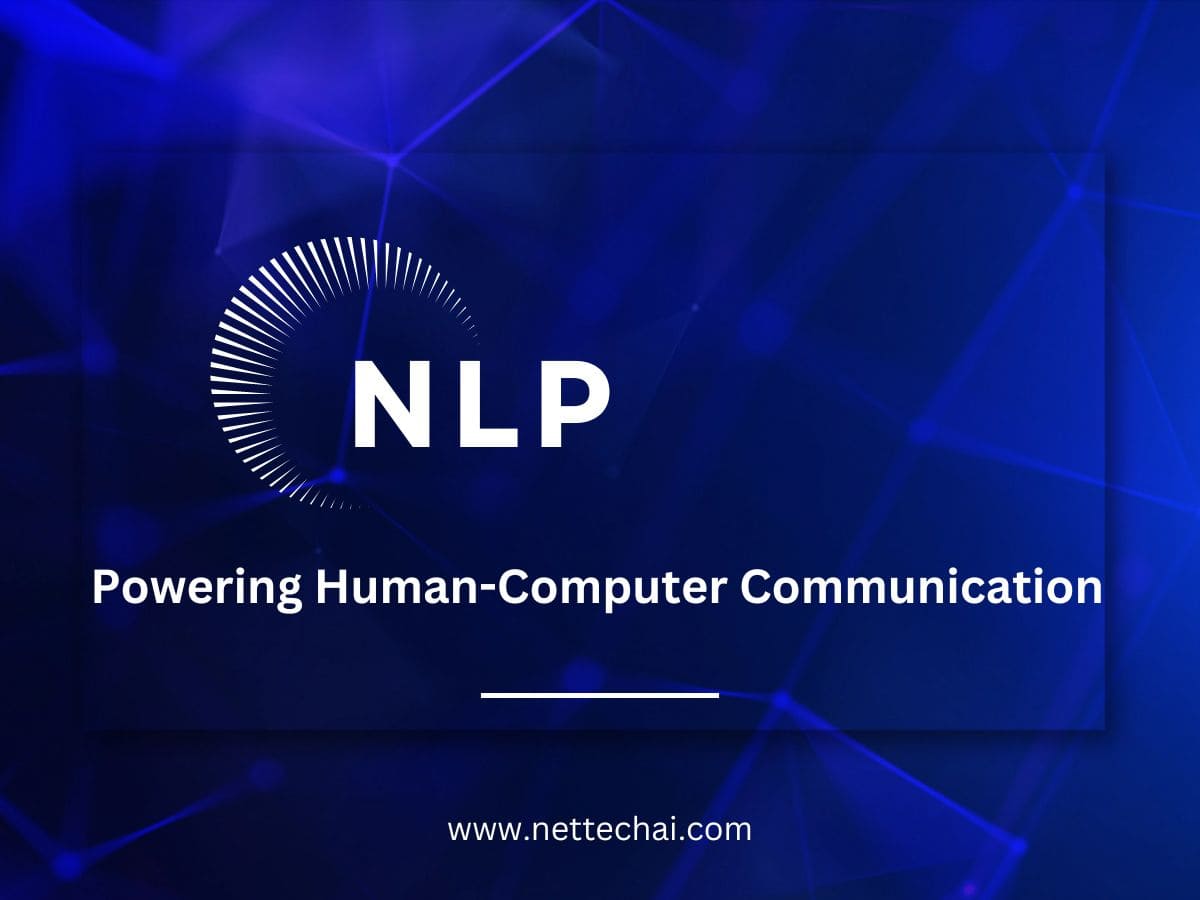In today’s digitally connected world, the seamless interaction between humans and computers has become a hallmark of modern technology. At the forefront of this transformation is Natural Language Processing (NLP), a field of artificial intelligence that bridges the gap between human language and computational understanding. This article embarks on a comprehensive exploration of NLP, revealing its definition, delving into its techniques, uncovering its diverse applications, and addressing the challenges that lie beneath its profound impact on human-computer communication.
What is Natural Language Processing (NLP)?
Natural Language Processing (NLP) represents a cutting-edge subfield of artificial intelligence that aims to empower machines with the ability to understand and generate human language. By intricately combining principles from linguistics, statistics, and computation, NLP empowers computers to decode the subtleties of human communication, thereby enhancing the intuitiveness and seamlessness of interactions. Essentially, NLP serves as a bridge that overcomes the communication gap, enabling computers to navigate the complexities of language and facilitate meaningful interactions.
Importance of NLP
NLP’s importance cannot be overstated. Given the vast array of languages, dialects, and communication styles, harnessing NLP provides an avenue for humans to interact with technology on a human-like level. This becomes particularly crucial as it simplifies language translation and empowers voice assistants. Ultimately, NLP propels the evolution of human-computer interaction, rendering it more fluid, efficient, and accessible.
NLP Techniques and Tools
NLP leverages an intricate tapestry of techniques and tools to dissect the complexities of human language, enabling machines to engage with text in meaningful ways.
Tokenization
A fundamental technique, involves segmenting text into smaller units, typically words or phrases. This process serves as the foundation for subsequent analysis and processing.
Part-of-speech tagging
Bestows words with grammatical categories, allowing computers to discern their roles within sentences.
Named entity recognition
Identifies entities like names, dates, and locations, lending context to the data being analyzed.
Pioneering NLP libraries like NLTK (Natural Language Toolkit) and spaCy have been instrumental in the development of NLP applications. NLTK offers a comprehensive suite of tools for text analysis, while spaCy is renowned for its speed and efficiency in delivering sophisticated natural language processing capabilities.
Applications of NLP
The transformative power of NLP is manifest in a multitude of applications that reshape how humans interact with technology.
Sentiment analysis:
Employs NLP to gauge the emotional tone of text, offering invaluable insights into customer opinions, market trends, and public sentiment.
Language translation:
Surmounts language barriers by leveraging NLP algorithms that understand and convert text from one language to another, promoting global communication.
Chatbots:
chatbots have revolutionized customer service, providing real-time responses and solutions. Meanwhile, voice assistants such as Siri, Alexa, and Google Assistant represent the pinnacle of NLP’s fusion with speech recognition, enabling devices to interpret and respond to human language.
Voice assistants:
Embody the culmination of NLP and speech recognition technologies. They decode spoken language into text, comprehend its meaning, and execute commands, ushering in an era of hands-free interaction and intuitive user experiences.
Challenges in NLP
As sophisticated as NLP has become, it confronts an array of challenges that stem from the intricacies of human language.
Ambiguity in Language
Language inherently harbors ambiguity, requiring contextual cues to ascertain intended meanings. This inherent vagueness poses a significant challenge for NLP systems, which must discern and accurately interpret multiple interpretations of the same sentence.
Cultural Nuances
Language is deeply intertwined with culture, giving rise to idiomatic expressions, humor, and context-dependent interpretations. Therefore, NLP algorithms must grapple with these cultural nuances to ensure accurate comprehension and generation of language.
Ethical Concerns and Bias
The ethical landscape of NLP development demands careful consideration and action.
Bias in NLP Models
The data used to train NLP models can inadvertently perpetuate societal biases. If not addressed, these biases can lead to outputs that are discriminatory or offensive and ensuring fairness and mitigating bias in NLP models is essential to fostering ethical interactions.
Transparency and Accountability
Ethical NLP design calls for transparency and accountability. Users should be aware when they are interacting with an AI system, and developers should establish clear guidelines for system behavior and limitations.
Ethical Concerns and Bias
NLP’s growing influence underscores the importance of ethical considerations to ensure its positive impact.
Addressing Bias
Efforts to mitigate bias in NLP models are critical. This involves meticulous data curation, diverse training data, and vigilant monitoring to detect and rectify any biased outcomes. Researchers and developers strive to ensure that NLP systems uphold principles of fairness and inclusivity.
Transparency and User Consent
User consent and transparency play a pivotal role in ethical NLP deployment. Consequently, individuals interacting with NLP systems should receive clear information about the technology and its implications, enabling them to make well-informed choices regarding their interactions
Looking Ahead
As NLP evolves, its trajectory is set to redefine human-computer communication and interaction.
Multilingual and Cross-Lingual NLP
NLP systems are steadily advancing to accommodate multiple languages, fostering cross-lingual communication and inclusivity on a global scale. Cross-lingual NLP seeks to transcend language barriers, empowering machines to understand and generate content in various languages.
Contextual Understanding
NLP’s future is characterized by a deeper understanding of context. With this in mind, contextual models are poised to grasp subtleties like sarcasm, humor, and tone, facilitating interactions that mirror human communication more closely.
Human-Centered Design
As NLP becomes an integral part of everyday life, a human-centered design philosophy becomes pivotal. Design systems to amplify and enrich human communication, ensuring that NLP augments human interaction rather than replaces it.
In conclusion, Natural Language Processing is a dynamic field that has unlocked new dimensions in human-computer communication. Its applications span diverse domains, from sentiment analysis to voice assistants, and its potential is limitless. However, addressing challenges such as ambiguity, cultural nuance, and ethical concerns is pivotal to unleashing NLP’s full potential. While researchers and developers persistently guide NLP toward inclusivity, transparency, and fairness, its impact on human interaction is poised to soar. With NLP serving as the bridge, the gap between human language and computational prowess is being crossed, heralding a future where communication flows effortlessly and technology genuinely comprehends us.







3 thoughts on “Natural Language Processing || Human-Computer Communication”